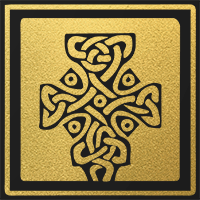Discover the Remarkable History of Fahan
Keep Scrolling to learn about the different eras that have transformed Fahan and what they added to the rich heritage of the area
The area of Fahan has been inhabited for thousands of years. The fertile soils along the shores of Lough Swilly, offering both food resources and safe anchorage provided very favourable conditions for continued human settlement at Fahan since earliest times.
PRE-CHRISTIAN
Before the foundation of the monastic settlement at Fahan at the beginning of the 7 th century, and prior to the introduction of Christianity in Ireland from the beginning of the 5 th century, the area had human settlement in the form of farming communities that also had strategic access to Lough Swilly. This is evidenced by the recorded archaeological record within the immediate environs which include a range of prehistoric megalithic tombs, cairns, cist cemeteries and rock art.
Christianity
The early medieval period saw the introduction of Christianity in Ireland and continued up to the arrival of the Anglo-Normans during the 12th century (c. 400 AD – 1169 AD).
The early medieval monastery at Fahan was founded around the beginning of the 7 thcentury and following the death of St Mura it was known as Fáthain-Mura, or Fahan-Mura.
There are references in the Annals of the Four Masters including records of notable abbots present at the site for several centuries, all of which infer the importance of the monastic settlement.
Medieval monastic settlements often received protection and patronage from Gaelic lords. The early ecclesiastical settlement at Fahan is nestled along the Swilly circa 7km northwest of the great ancient seat of the Uí Neill at Grianan Aileach, for whom St Mura was considered their patron saint.
The church ruins we see today date at least to the early 17th century when the structure was described by the Royal Commission in 1622 as & well and sufficiently repaired & and it continued in use until a new church was built nearby in 1820.
St. Mura
St Mura (550-645AD) is regarded as the patron saint of the O’Neill’s, and according to the Martyrology of Donegal was a descendent of Eoghan (son of Niall of the Nine Hostages) after whom the lands of Inishowen (Inis Eoghain – ‘Lands of Eoghan’) earns its placename.
His feast day is 12 March and the monastery at Fahan continued in prosperity throughout the medieval period, as evidenced by the noted abbots that followed.
Testimony to the wealth of the site is the important artefactual and monumental collections associated with the site. There is a crozier, the Bachall Mhura, in the care of the Royal Irish Academy, a bell-shrine in the Wallace Collection, London; and of course a highly ornate carved Cross-Slab said to mark his burial place at the graveyard in Fahan.
Click on the image to visit the Wallace Collection Website
THE PLANTATION OF ULSTER
Like most other areas in the region, Fahan formed part of the forfeiture of lands by Catholic Irish to the English Crown during the early-mid 17th century. The so termed ‘Plantation of Ulster’ is well documented and the Down Survey of Ireland (1656-1658) was a detailed land mapping survey that sought to measure and redistribute lands to British soldiers, merchants and planter-settlers. St Mura’s church was described by the Royal Commission in 1622 as & well and sufficiently repaired & and it is depicted in the parish of ‘Faunthen’ in the early Down Survey maps together with reference to ‘improvements therein [at a] church’.
Use of the church continued until the nearby Church of Ireland church was built in 1820. The graveyard and boundary walls that we see today are a contraction of what would have been a larger early medieval ecclesiastical enclosure. The original graveyard may extend beyond the later masonry boundary walling and retains multiples of interments dating from the early medieval period to the late twentieth century. Buried human skeletal remains were previously uncovered in 2000 during adjacent road widening and realignment operations which are indicative of the overall site extent.
Mounted on the exterior graveyard wall flanking the southern gated entrance is a reused cut-stone slab with a carved wheeled cross on one side, and a holed or perforated stone on the other. The latter could be an example of a reused early mill stone and may indicate milling associations at the site, possibly using the original riverine water source that skirted the monastic enclosure to the north.
Fahan House is one of the earliest dwellings in the area, a fine early mid 18th century country house that references the legacy of the Plantation era, and which still retains much of its original form and character. Occupied by an English sea captain, Rear Admiral William Heath (1748-1815) and later recorded by Lewis (1837) as the residence of a T. Kough Esq, it was subsequently occupied by a Norman Conolly in 1811 (Slater’s Directory). The house is also apparently the childhood home of Agnes Jones (1832-68), a pioneering nurse who trained with Florence Nightingale. She is best known for transforming the workhouses in Liverpool during the 1860s where she died of typhus, and is buried at St Mura’s historic graveyard in Fahan.
Glengollan House &
the Norman Family
From Bishop’s Palace to Republican Fortress
THE END OF AN HISTORIC CO. DONEGAL MANSION
“Oh! There is not on our island a vale or a lawn
Like that lovely recess in the vale of Fahan;
Sweet vale of repose; may thy inmates be blest,
Both here and hereafter, with comfort and rest;
May the blessings they wish to the world be their own,
And long may they flourish in old Innishowen.”




